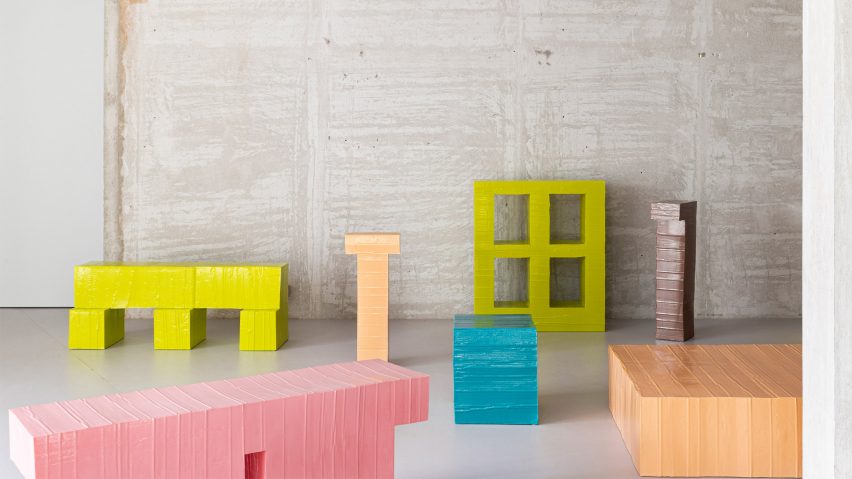
Five unembellished furniture designs by Saltzman Prize-winner Marco Campardo
London's Design Museum has crowned Marco Campardo the winner of its annual Ralph Saltzman Prize for emerging designers. Here, the Italian designer walks us through five of his key projects and explains why he is "not a very decorative guy".
Campardo, who started his career as a graphic designer in Venice, set up his own studio in Peckham in 2019 with a focus on material experimentation and "hacking" industrial processes to create unexpected outcomes.
"Marco caught my eye because of his fresh take on design," said Edward Barber of Barber Osgerby, who nominated Campardo for the prize. "He is not constrained by the past and is creating new, thought-provoking designs using interesting and experimental materials."
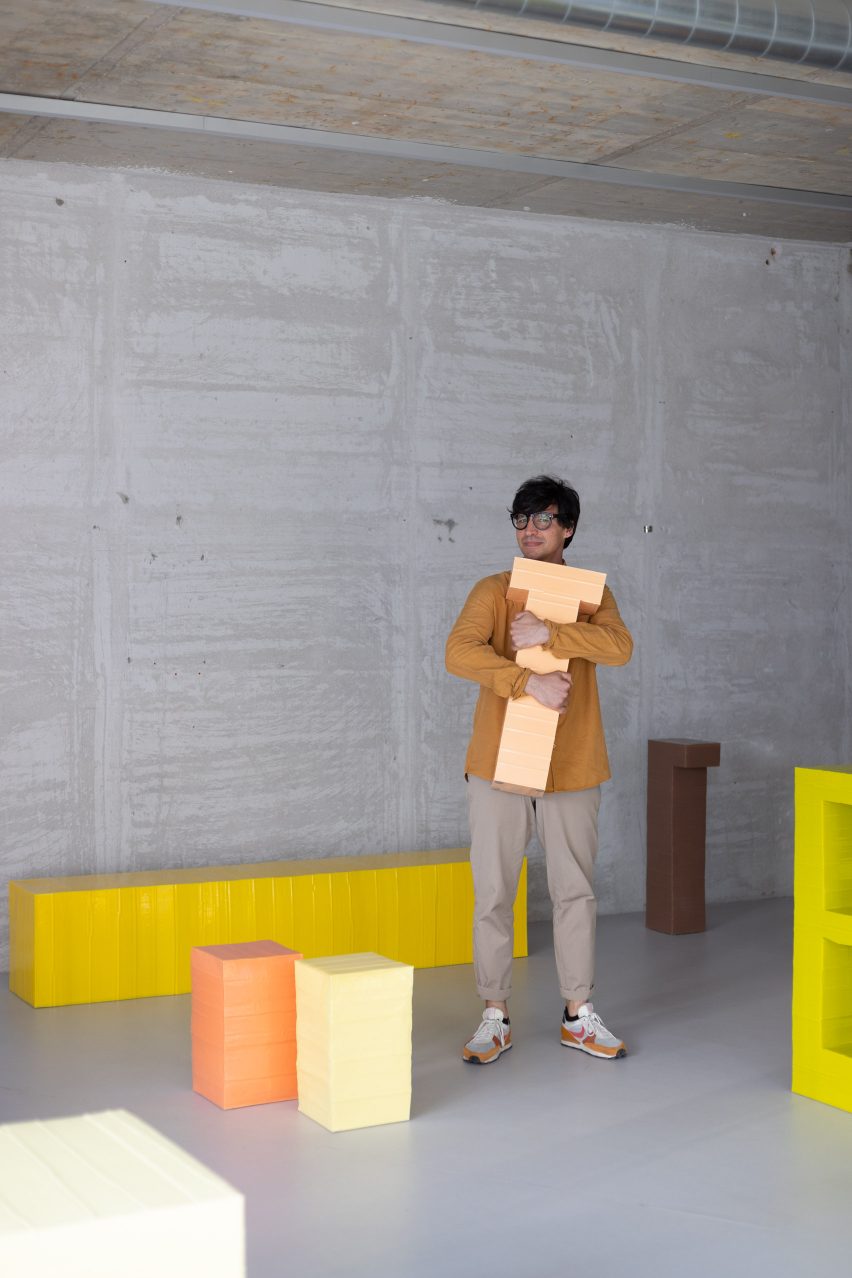
Campardo follows in the footsteps of Nottingham furniture designer Mac Collins as the second winner of the annual Ralph Saltzman Prize, which was founded by the Design Museum and the foundation of late American textile designer Ralph Saltzman to provide a platform and funding for up-and-coming product designers.
With this aim, the designer will receive a £5,000 bursary and a dedicated solo show at the museum, which is set to open on 2 February and will feature key projects illustrating his process-driven approach.
"I'm obsessed with finding materials or techniques that, by themselves, generate the decoration or the final aesthetic," Campardo told Dezeen. "Most of the time, I start with that and then I set myself a lot of limits."
"I'm not a very decorative guy," he added. "So I'm scared to design a rug. Unless I find a technique that gives me aesthetics that are process-driven, it would be a total disaster."
Here, the designer walks us through the projects that will be on display in the Design Museum and how they came to be.
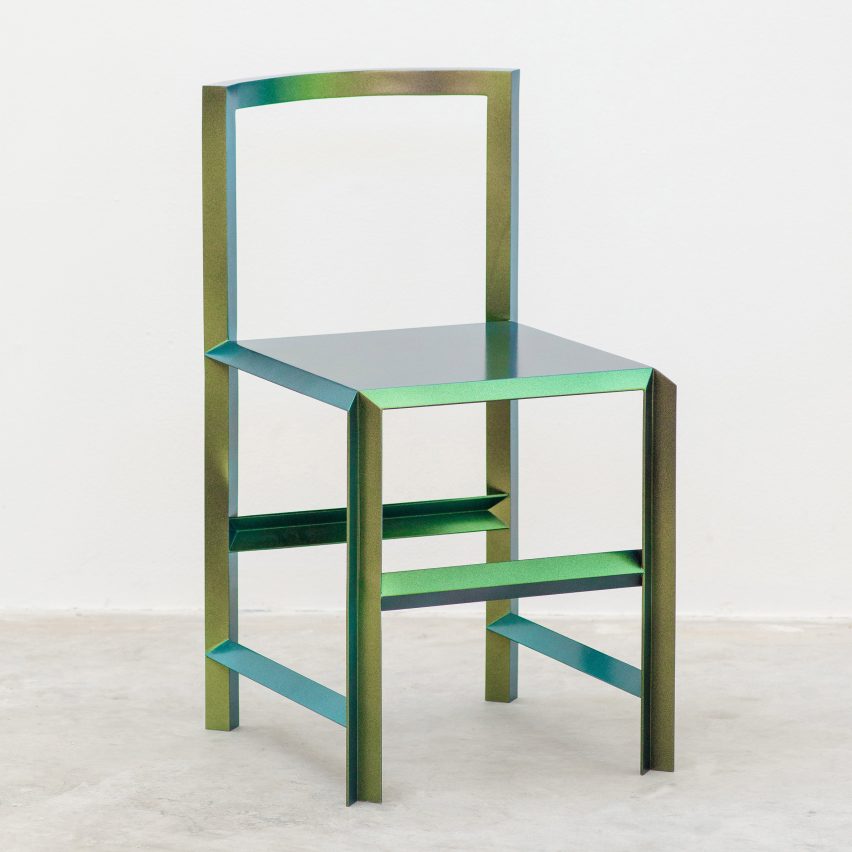
Elle collection, 2019
Elle started as an experiment to see if Campardo could take a readily-available mass-produced product – "the shitty L profiles you can buy at B&Q" – and combine it in unconventional ways to form a piece of furniture.
"I discovered that by defining three different types of joints, I was able to do a chair," he explained. "And then, I used the same system to create a bookshelf, a table and a bench."
"Elle was my first attempt at a more sophisticated approach. I was testing to see if my idea was strong enough to allow me to create different outcomes, not just one single object."
Iridescent car paint was applied to the final pieces to highlight their facets and give them an almost two-dimensional appearance, like digital renders or pieces of folded paper rather than solid brass.
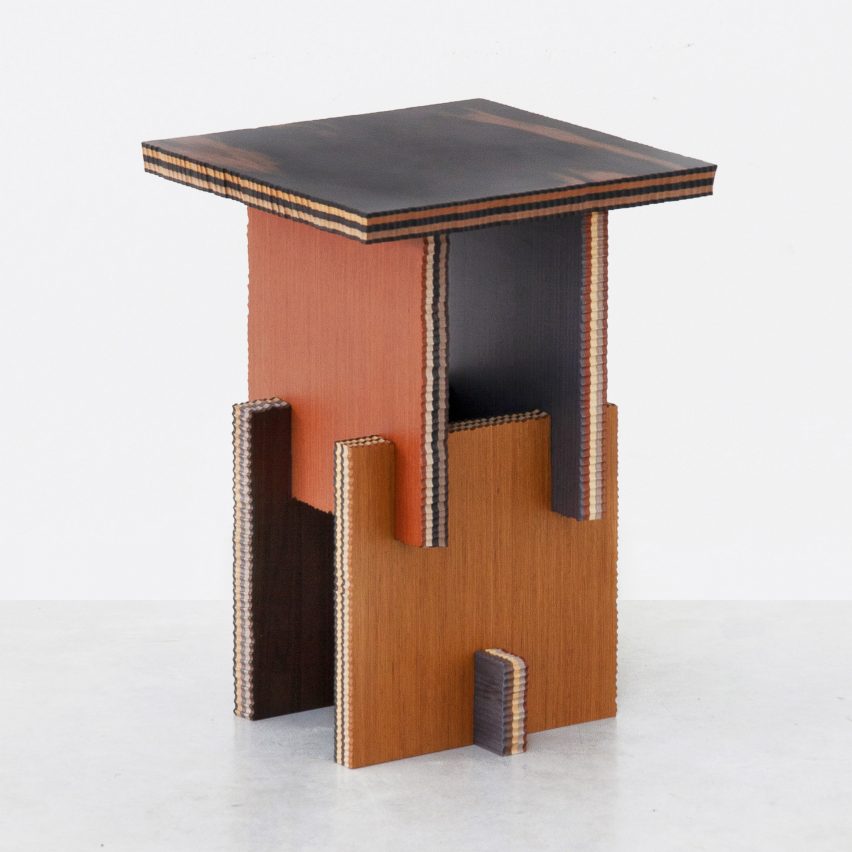
George tables, 2020
Informed by the process used to turn wood into load-bearing cross-laminated timber (CLT), wood veneer offcuts from Italian manufacturer Alpi are stacked and glued together under pressure to form each structural element of the George tables.
The resulting layers and pattern are only revealed on the very edges, which Campardo chisels by hand to create a "silly" impression of wood's natural, rugged texture.
"The fact that every piece is unique is not a marketing strategy, it's the result of a specific process," he said.
"The client cannot choose from a catalogue. Everything depends on what is discarded and the pallet of materials that I receive."
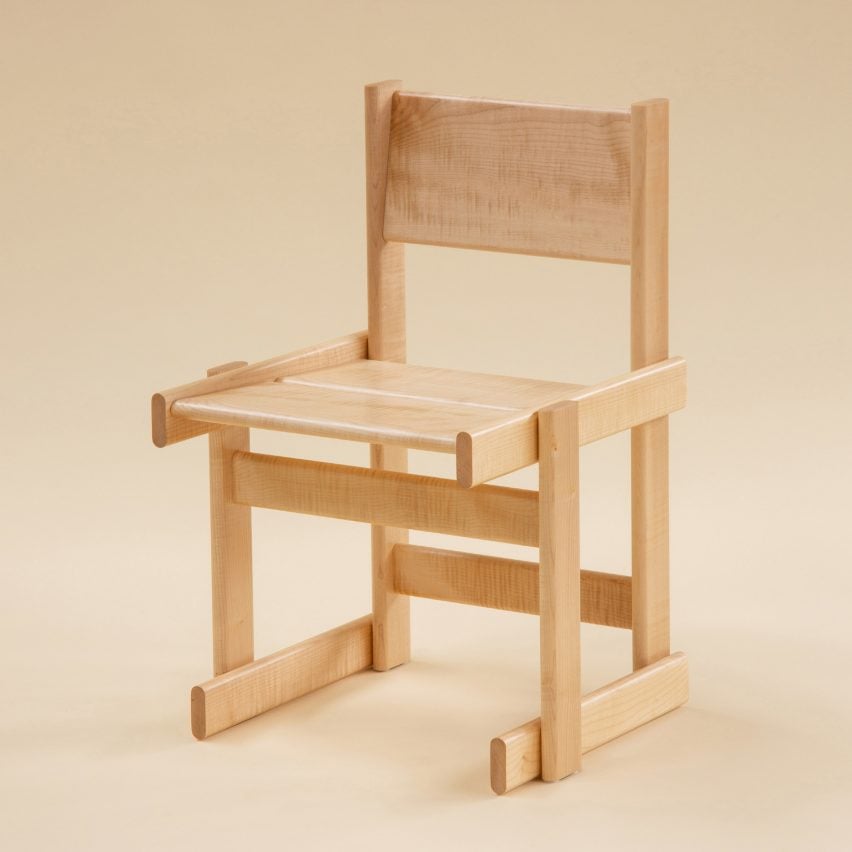
Bullnose chair, 2020
Although at first glance, Bullnose might look like a "very stupid wooden chair", Campardo says the design is distinguished by its use of only a single shape, based on that of a conventional bullnose trim.
This shape is repeated over and over again in different widths and lengths to form the seating design that is now set to go into production with a well-known Scandinavian brand as part of a larger product family.
The piece is rendered in curly maple wood, named after the growth defect that creates its irregular grain and gives the design its distinctive rippled finish without the need for paints, tools or treatments.
"It's purely decorative but made by nature, not by human beings," the designer explained. "So nature is giving us the aesthetic of the final piece."
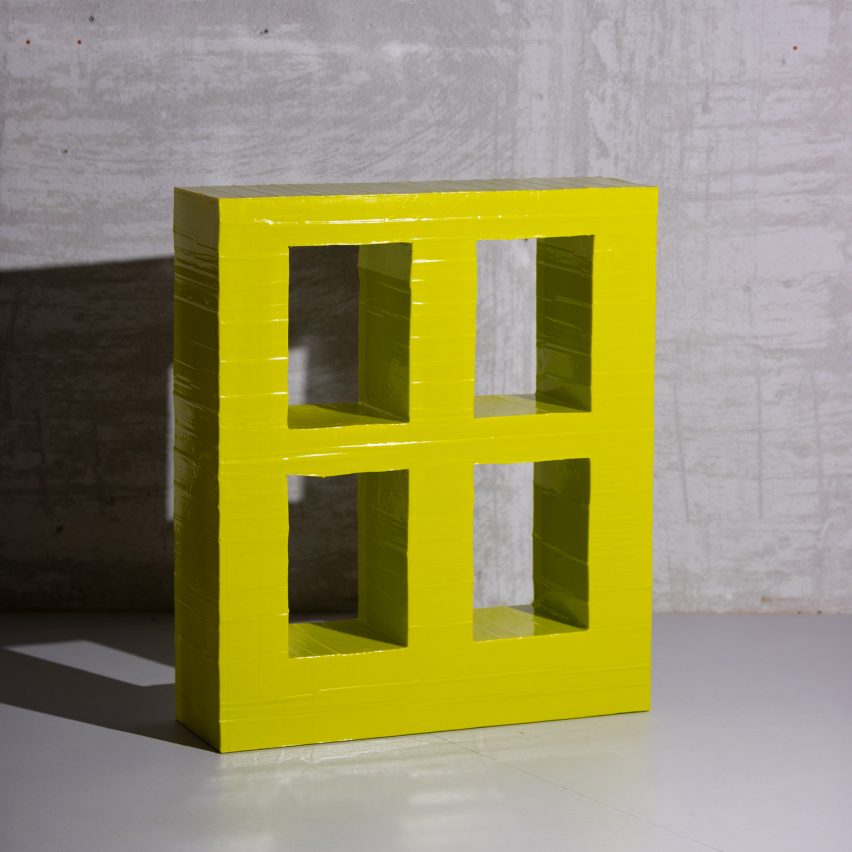
Jello collection, 2022
Although it now includes a range of seating, tables and storage (pictured top), the Jello collection started out with a commission for a single stool from the Macro museum in Rome and the aim to produce 30 of these stools on a shoestring budget in only five days.
Working within these constraints, Campardo adapted the established industrial process of rotational moulding using custom-made moulds made from laminated cardboard scraps, as traditional metal moulds can cost hundreds of thousands of pounds to develop.
Rather than being a handicap, this mould helps to the resin furniture its character, imprinting it with the finish of the glossy plastic film and the pattern of the cardboard, much like butter retains the outlines of its foil wrapper.
It also allows each product to be cast in just one piece, as the mould can simply be cut away at the end of the drying process.
"The fact that the mould is made of cardboard allows you to do shapes that you wouldn't be able to achieve with the classic industrial process because of the complexity of the mould," the designer said.
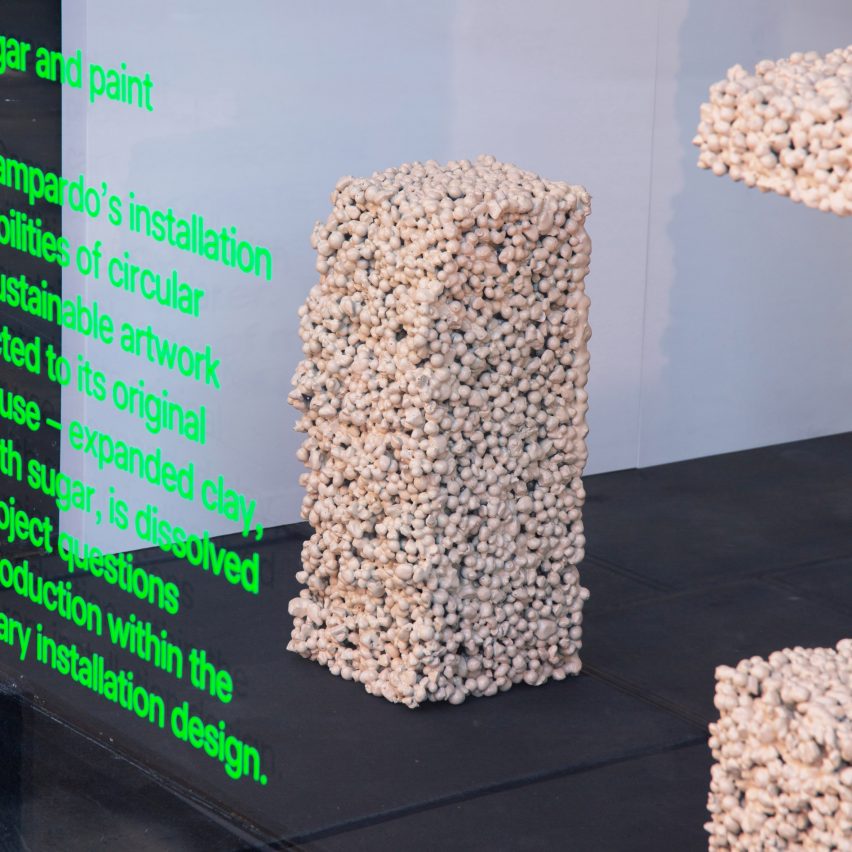
Reversible display, 2022
Emulating the way that granola bars are held together by sugar and honey, Campardo used an artificial sweetener called isomalt to bind together these display stands formed of pebbles of expanded clay, which he designed for London department store Selfridges.
This binder simply dissolves when it comes into contact with water, allowing the pebbles to be reused elsewhere as an aggregate or a growth medium for plants.
"It's a provocation," the designer said. "My objective wasn't to propose a new product or standard. It was to point out that we should start to rethink the way that we conceive shop windows."
"They're always temporary. But we make these installations that are going to endure for maybe 60 days from virgin materials like plastics and then throwing them away – and most of the time they are not recyclable."
The 2023 Ralph Saltzman Prize display will be on show at London's Design Museum from 2 February to 3 April 2023. See Dezeen Events Guide for an up-to-date list of architecture and design events taking place around the world.